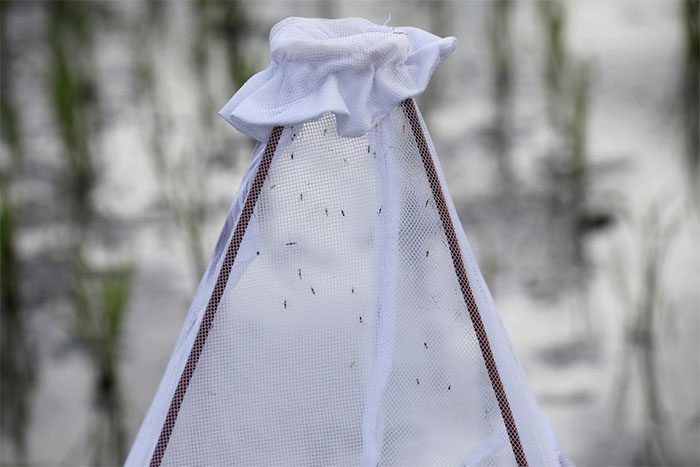Bed nets are a tool for the significant advancements that the world has achieved in recent decades against malaria, saving millions of lives. However, progress has stalled in recent years, partly due to mosquitoes developing increasing resistance to the insecticides used in existing bed nets.
In 2020, 627,000 people died from malaria, primarily children in the Sub-Saharan region of Africa.

Anopheles mosquitoes trapped in a net placed in a rice field during a malaria trial in Zanzibar, Tanzania, on October 30, 2019. (Photo: Reuters).
Now, researchers at the London School of Hygiene and Tropical Medicine (LSHTM), the UK National Institute for Medical Research, Kilimanjaro Christian Medical University College in Tanzania, and the University of Ottawa in Canada have demonstrated that a new insecticide – the first in 40 years – is both safe and effective in a randomized real-world trial.
This raises hopes for a new weapon in the fight against malaria.
The nets treated with chlorfenapyr and pyrethroid, commonly used chemicals, reduced malaria infection rates by 43% in the first year and 37% in the second year of the trial compared to existing nets.
The study involved over 39,000 households and tracked more than 4,500 children aged 6 months to 14 years. The nets developed by BASF in Germany and LSHTM are slightly more expensive than current nets, costing around $3 each, but researchers indicate that the savings from preventing malaria cases have outweighed the initial cost increase.
Chlorfenapyr works differently from pyrethroid, effectively grounding mosquitoes by causing spasms in their wings, preventing them from flying and thus from biting humans and transmitting disease. This chemical was first proposed for use against malaria 20 years ago and has been used for pest control since the 1990s.
The World Health Organization (WHO) has approved the use of these new nets, but trials funded by the UK government and the Wellcome Trust could lead to broader recommendations for their use.
“This is the first evidence in real-world conditions”, said Dr. Jacklin Mosha, the lead author of the study from the National Institute for Medical Research, Tanzania, to Reuters.
Along with the development of a malaria vaccine approved by the WHO last year, the research team stated that the nets could be another tool in the malaria toolbox.
However, they warned that it is crucial that mosquitoes do not quickly develop resistance to chlorfenapyr if widely used.

















































